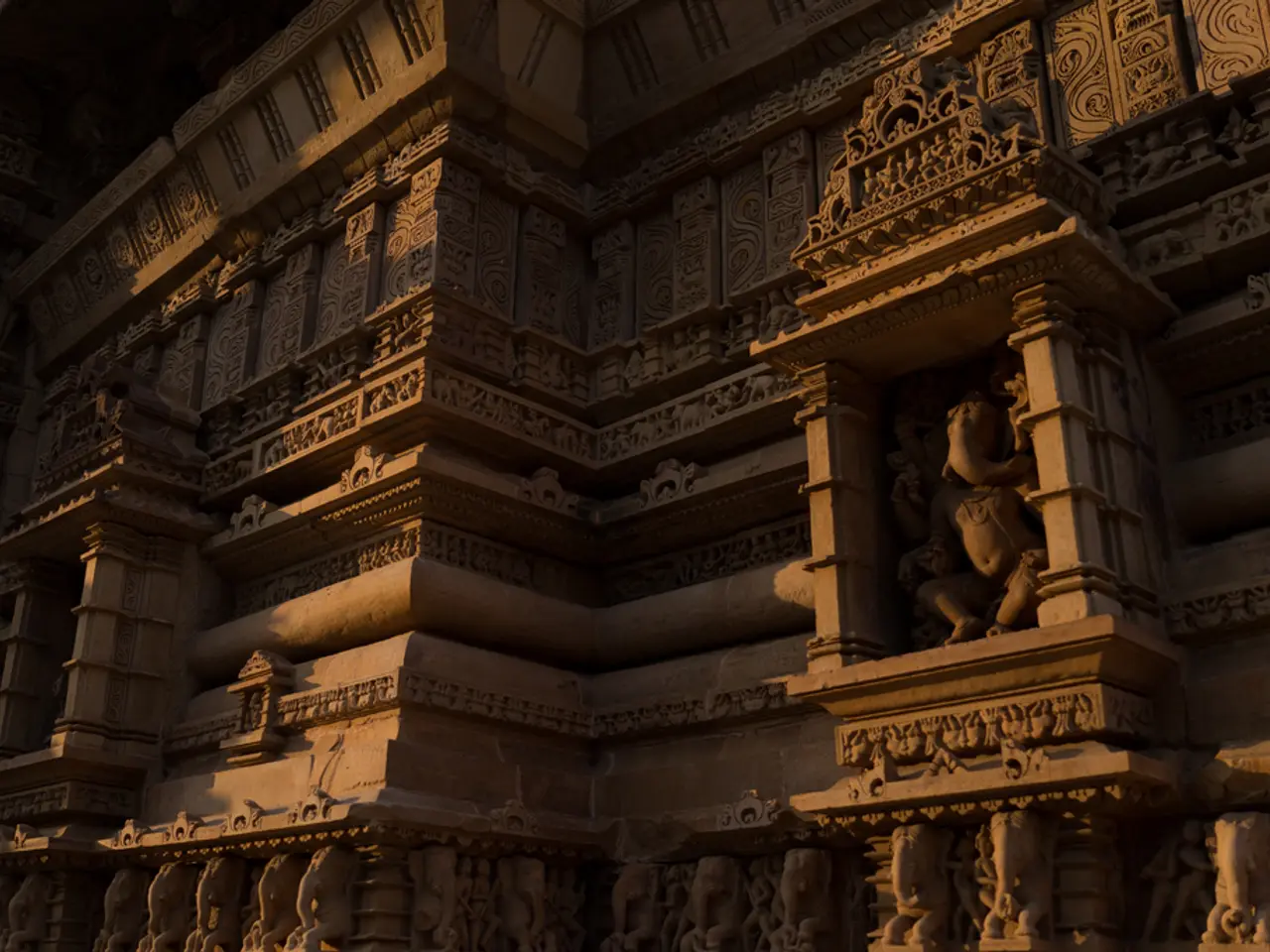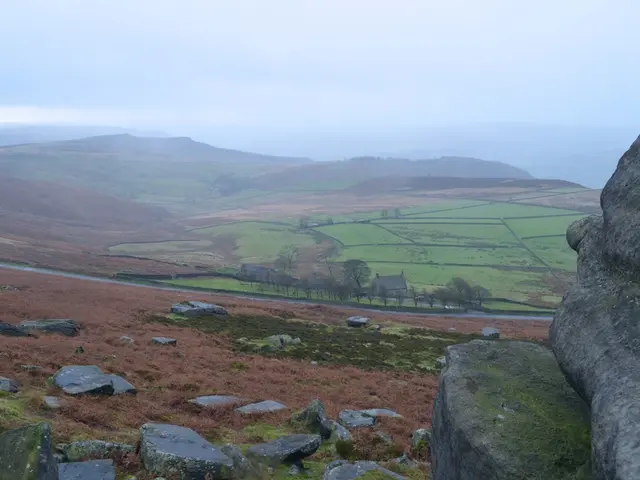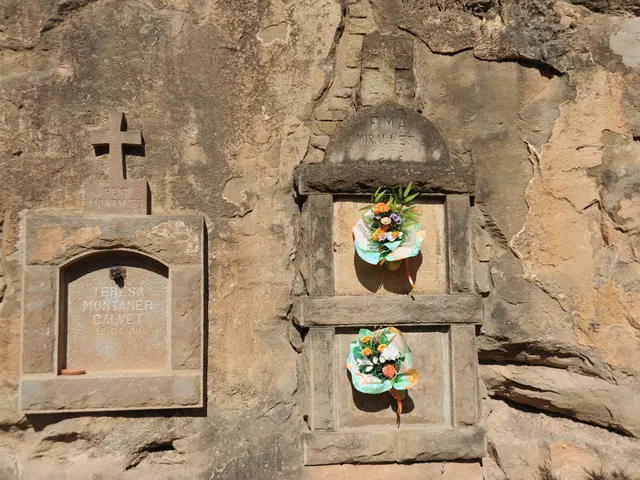Discovered Roman Bathhouse in party city Baiae could potentially be linked to renowned politician Cicero
Discovered: Cicero's Submerged Roman Bathhouse in Baiae
A remarkable archaeological discovery has been made in the depths of the Mediterranean Sea, near Naples, Italy. Researchers have unearthed a lavish Roman bathhouse, believed to have once belonged to the renowned Roman orator, philosopher, and statesman, Cicero.
The bathhouse, situated about 10 feet underwater in Zone B of the Parco Archeologico Sommerso di Baia, is a testament to the opulence of ancient Rome. It features mosaics, heated floors, wall paintings, and a sophisticated system for circulating hot air known as suspensurae, which allowed for the creation of a sauna.
The bathhouse was discovered in 2023, and the Campi Flegrei Archaeological Park has proposed that it may have been part of Cicero's villa. Baiae, the location of the bathhouse, was a symbol of elite decadence in the 1st century BC, known for its luxury and vices.
Interestingly, Baiae was not only a playground for the rich and powerful but also the final resting place for some of them. Emperor Hadrian, for instance, died in 138 C.E. while indulging in the city's baths. Emperor Caligula is also said to have ordered the construction of a floating bridge in Baiae.
Despite its glamorous past, Baiae has faced its share of troubles. The city was battered by invasions and geological instability, causing it to sink into the Mediterranean Sea. Today, it remains submerged, with its opulent ruins beneath the waves.
This discovery provides an exciting look back at Baiae's history and may be a physical link to Cicero. However, it's essential to note that the submersion of Cicero's bathhouse is a separate geological and archaeological phenomenon, unrelated to the fall of the Roman Empire.
The fall of the Roman Empire was a complex, multifaceted historical process, caused by a combination of factors including political corruption, economic troubles, leadership decline, external invasions, and spiritual/apathy decline within society. While the luxurious lifestyle epitomized by places like Baiae may reflect social and moral decadence contributing indirectly to Rome’s decline, the actual submersion of Cicero’s bathhouse is not directly connected to the empire's fall.
References:
[1] Goldsworthy, A. (2006). How Rome Fell: Death of a Superpower. New York: Viking.
[2] Carandini, A. (2023). The Baths of Cicero: A Submerged Roman Treasure in Baiae. National Geographic.
[3] Kelly, P. (2016). The Fall of Rome: And the End of Civilization. New York: W.W. Norton & Company.
[4] Potter, D. (2019). The Decline and Fall of the Roman Empire. London: Penguin Classics.
- The discovery of Cicero's submerged Roman bathhouse in Baiae offers a fascinating glimpse into the rich history of science and environmental-science, as researchers study the preserved artefacts and architecture.
- The opulent bathhouse, submerged under 10 feet of water, showcases the advancements in manufacturing and industry during the Roman era, with mosaics and wall paintings displaying remarkable artistic skills.
- The sophisticated system for circulating hot air, known as suspensurae, is a testament to the technological innovations of the time, hinting at the origins of energy and space-and-astronomy.
- Finance and investment played a significant role in the construction and maintenance of Cicero's villa, as the wealthy elite sought to demonstrate their wealth and status.
- The discovery of the bathhouse has sparked a renewed interest in archaeology, fueling an impetus for further exploration and technological advancements in data-and-cloud-computing.
- Climate-change and geological instability likely contributed to the submersion of Baiae, offering researchers a unique opportunity to study the effects of environmental science on the city's history.
- The luxurious lifestyle exemplified by Cicero's bathhouse can be linked to the retail industry, as wealthy citizens would have sought out high-quality goods and services to exhibit their wealth and status.
- Entrepreneurship during the Roman era is evident in the creation and management of the bathhouse, demonstrating the drive for innovation and economic growth.
- The bathhouse's submergence introduced complications in the preservation and conservation of cultural heritage, necessitating advancements in the field of environmental-science and technology.
- The study of Cicero's submerged Roman bathhouse in Baiae could have applications in archaeology, archaeometry, and the scientific analysis of materials.
- The recovery of the bathhouse provides a valuable addition to the field of interior-design, offering insights into Roman architecture and design principles.
- The cooking techniques used during the Roman era can be studied through the preserved kitchen facilities within the bathhouse, contributing to the field of culinary arts.
- The transportation infrastructure in Roman times, such as roads and waterways, facilitated the movement of goods and people to Baiae, making it a bustling hub.
- Leadership in ancient Rome can be observed through Cicero's ownership of a grand bathhouse, demonstrating the power dynamics and expectations of the times.
- Diversity-and-inclusion can be seen in the mix of Roman elites who frequented Baiae for leisure and relaxation, as well as in the various craftsmen and laborers involved in the construction of the bathhouse.
- Wearables, such as jewelry and clothing, can be found among the artifacts recovered from the bathhouse, offering insights into fashion-and-beauty during the Roman era.
- Smart-home-devices, like the temperature-controlled bathing system, show the early development of technology and its integration into daily living.
- Cybersecurity was a concern even in ancient times, as burglars may have attempted to steal valuable items from the bathhouse, inspiring developments in security systems and technologies.
- Lifestyle during the Roman era was heavily influenced by social status, luxury, and hedonism, as demonstrated by the grandeur of Cicero's bathhouse.
- Outdoor-living was popular in Roman society, with inhabitants spending much of their time in gardens and public spaces, such as the bathhouse in Baiae.
- Industries like fashion-and-beauty and food-and-drink flourished in Baiae, catering to the wealthy elite with high-quality goods and services.
- The automotive industry can be traced back to the transportation methods used during the Roman era, such as chariots and watercraft.
- Small-business owners in Baiae likely provided the goods and services necessary for the bathhouse's operation and maintenance.
- Investors and financiers may have financed the construction of the bathhouse, seeking returns on their investments in the thriving industries of the time.
- Wealth-management practices during the Roman era are evident in the preservation and protection of assets like the bathhouse.
- Home-and-garden, home-improvement, and housing-market were significant sectors in ancient Rome, with the wealthy elite investing in properties like the villa that housed Cicero's bathhouse.
- The artifacts and structures recovered from Cicero's submerged Roman bathhouse provide valuable insights into the economy, culture, and lifestyle of the Roman Empire, offering a rich tapestry of history to be studied and appreciated for generations to come.








